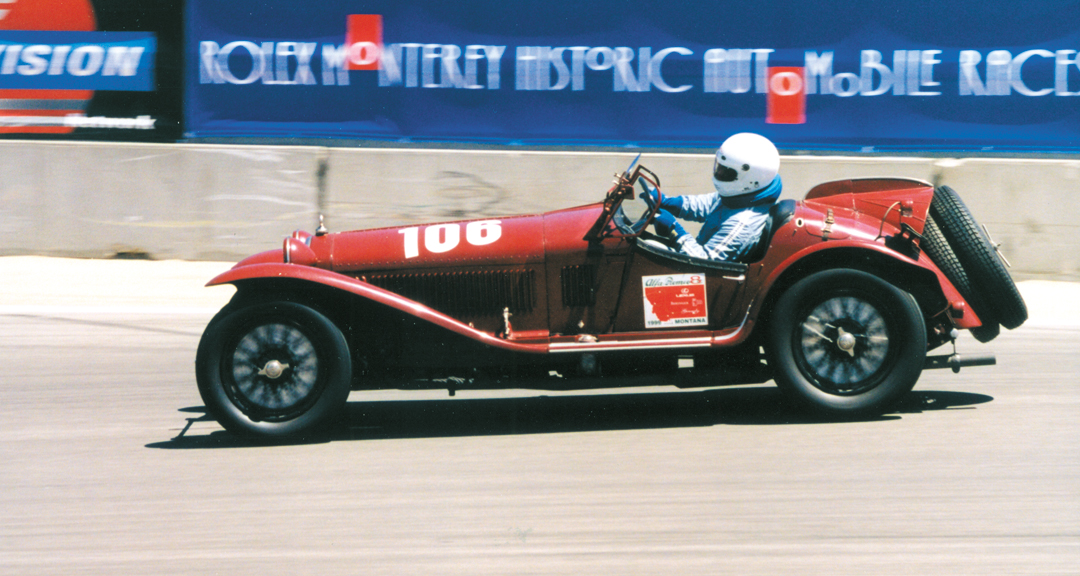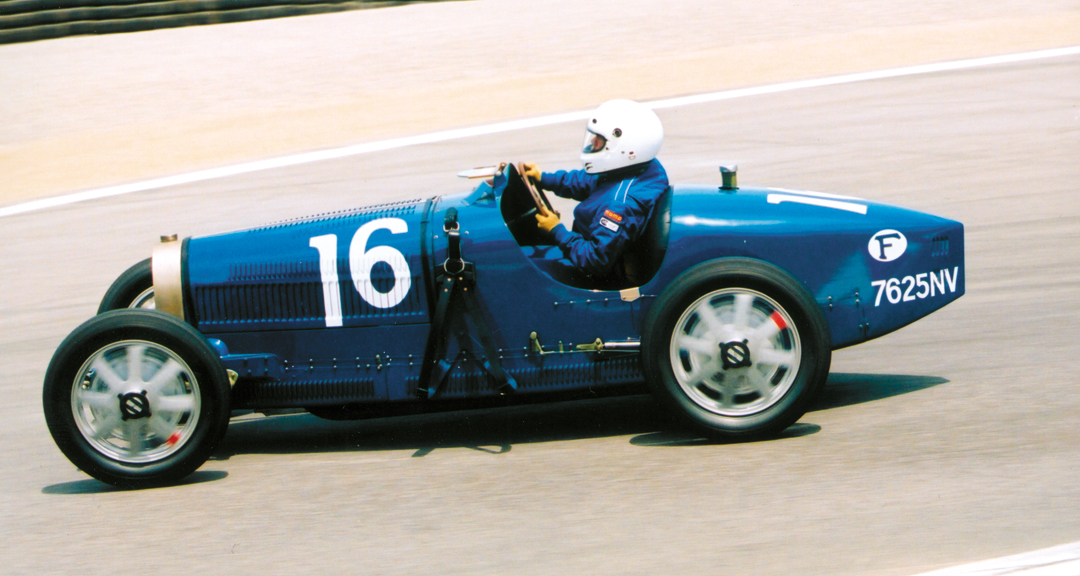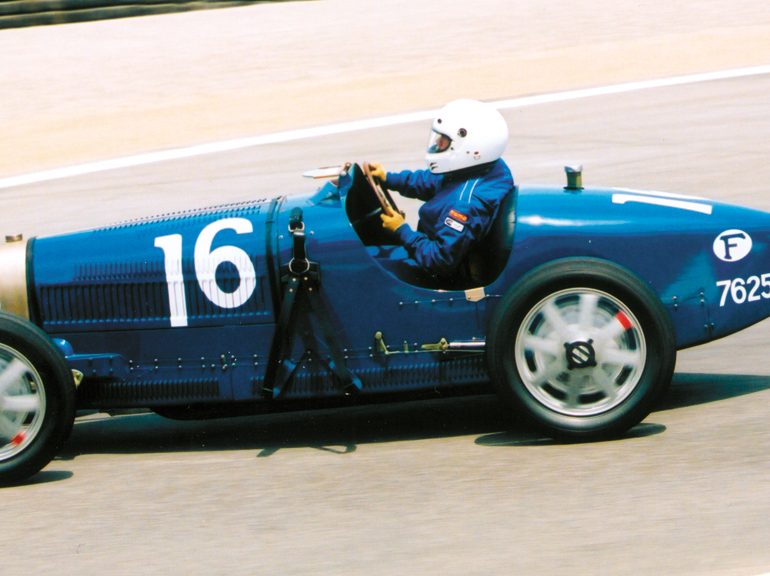From the very beginning of the automobile, man built cars to compete with a passion for speed and technology. These early innovators are in an elite club with their place in automotive history guaranteed as the creators of a true classic sports car, a genuine thoroughbred.
The development of the racing sports car can be traced to specific manufacturers who at one time in history dominated motor racing, in particular the world’s most challenging road races, such as the Mille Miglia, Targa Florio and endurance contests such as Le Mans 24 Hours.
The creation of an automobile which could win in international competition was usually the inspiration of one passionate man, an engineer, a genius who put all of his design and engineering skills toward his goals.
Part one of this prewar market guide will feature some of these exciting cars, their founders and designers, most notably Alfa Romeo – (Nicolo Romeo and Vittorio Jano), and Bugatti (Ettore Bugatti and sons). Today these prewar masterpieces are highly sought after by the sophisticated collector. They and their current owners are often invited to partake in the most prestigious historic racing venues world wide — the Le Mans 24 Hour Classic, Mille Miglia Storica, Monaco Historique Grand Prix and the Targa Florio to name but a few.
Due to the age of these cars and their racing heritage, their value is determined by their originality and provenance. Old cars built up from parts are not the same as true complete survivors. As a result, the remaining total of many of these models may be less than 10 good surviving examples.
| Make | Model | Level III | Level II | Level I |
| AC | 12/24 | $20,000 | $30,000 | $40,000 |
| 12/40 | $20,000 | $30,000 | $40,000 | |
| Ace 16/56 | $30,000 | $40,000 | $50,000 | |
| Ace 16/66 | $40,000 | $50,000 | $60,000 | |
| Ace 16/90-90 | $75,000 | $90,000 | $110,000 | |
| Alfa Romeo | RL Targa Florio | $200,000 | $250,000 | $300,000 |
| 6C 1500 SS/SC | $175,000 | $200,000 | $225,000 | |
| 6C 1750 GS/SC Zagato | $300,000 | $375,000 | $450,000 | |
| Tipo B Monoposto P3 | $1,800,000 | $2,000,000 | $2,200,000 | |
| Tipo C Monoposto 8C35 | $1,200,000 | $1,500,000 | $1,700,000 | |
| Tipo 8C 2300 | $850,000 | $1,000,000 | $1,200,000 | |
| Tipo 8C 2300 Lungo (Le Mans) | $1,000,000 | $1,400,000 | $1,700,000 | |
| Tipo 8C 2300 Corto (Mille Miglia) | $1,700,000 | $2,000,000 | $2,300,000 | |
| Tipo 8C 2300 Spider Corsa (Monza) | $2,000,000 | $2,400,000 | $2,700,000 | |
| Tipo 8C 2900B Corto | $2,500,000 | $3,000,000 | $4,000,000 | |
| Tipo 8C 2900B Lungo | $2,000,000 | $2,500,000 | $3,000,000 | |
| Alvis | 4-Cyl., FWD | $100,000 | $125,000 | $150,000 |
| Amilcar | 6C | $75,000 | $100,000 | $150,000 |
| Aston Martin | Ulster Mk II | $100,000 | $125,000 | $150,000 |
| Lemans | $200,000 | $225,000 | $250,000 | |
| 2-Liter Speed Model | $50,000 | $60,000 | $70,000 | |
| Bentley | 3-Liter Speed Model | $150,000 | $175,000 | $200,000 |
| Big Six | $300,000 | $400,000 | $500,000 | |
| 4.5-Liter | $225,000 | $275,000 | $325,000 | |
| Speed Six | $500,000 | $700,000 | $800,000 | |
| 4.5 Liter Blower | $500,000 | $700,000 | $800,000 | |
| 8-Liter | $300,000 | $400,000 | $500,000 | |
| BMW | 328 | $200,000 | $225,000 | $250,000 |
| Bugatti | Type 35 | $900,000 | $1,100,000 | $1,250,000 |
| Type 37A Supercharged | $800,000 | $900,000 | $1,000,000 | |
| Type 51 | $900,000 | $1,100,000 | $1,250,000 | |
| Type 57SC Atalante | $1,700,000 | $1,800,000 | $2,000,000 |
Alfa Romeo 8C 2300

Bugatti Type 35 Grand Prix Car

Criteria Used For Assessing Valuations for this Guide:
- Degree of Originality
- Overall Condition, Restoration
- Technology, Design, Coachbuilder
- Production Numbers/Rarity
- Competition History
- Ownership History, Documentation
- Modern Event Eligibility
Regional Variances
The prices stated in this guide are based on U.S. values. The values of historic racing cars can vary as much as 25%-35% in other countries, depending on local market appeal, currency rates, import duties, and VAT. Most of the time, we are able to document known sales or closed escrows, as they say in real estate. When this is not possible, a logical estimate of the car’s value is given, based on its sales history and relationship to cars of its type.
The prices stated in this guide are based on U.S. values. The values of historic racing cars can vary as much as 25%-35% in other countries, depending on local market appeal, currency rates, import duties, and VAT.
LEVEL |
VALUATION CATEGORIES |
|---|---|
I |
The best combination of all criteria. |
II |
Satisfies mid-range of criteria. |
III |
In need of restoration. Meets only a few points of criteria |




